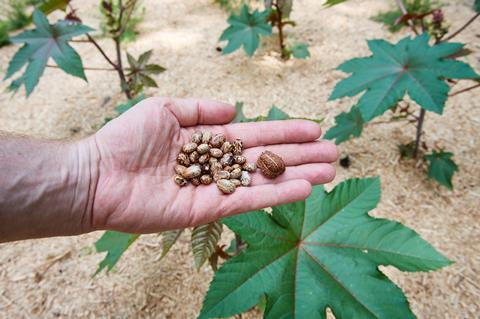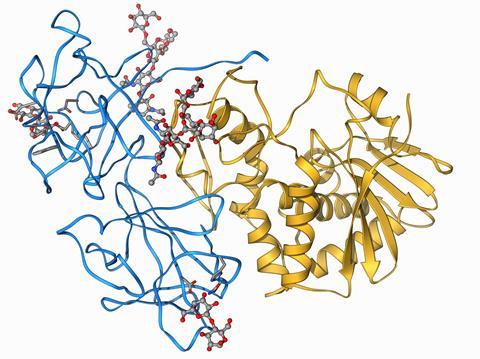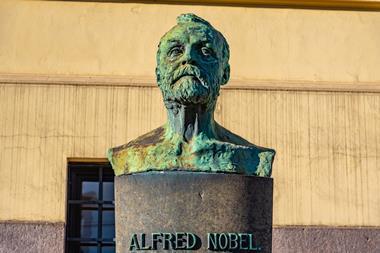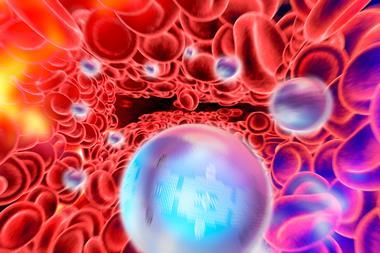A UK doctor has gone on trial for the attempted murder of his mother’s partner using a poisonous substance. The court heard that Thomas Kwan had a ‘deeply disturbing, long-term interest bordering on obsession’ with poisons. Kwan had researched and obtained the raw materials to produce ricin, which investigators initially thought he had used in the attempted murder. It has since been suggested that the poison used was actually iodomethane.
Ricin is one of the world’s most famous poisons, having featured in Agatha Christie novels, TV shows like Breaking Bad and real-life cold war assassination attempts. The compound is listed as a controlled substance under both the Biological Weapons Convention and the Chemical Weapons Convention. But what is it that makes ricin such a dangerous poison?
What is ricin?
Ricin is a protein produced in the seeds of the castor oil plant. It is a type of carbohydrate-binding protein known as a lectin. Lectins are found throughout nature and are produced by plants, animals, bacteria and viruses. Ricin was actually the first compound in this class ever to be discovered when it was isolated in 1888 by the Baltic–German microbiologist Peter Hermann Stillmark.

Lectins are found in various beans and grains, many of which must be cooked prior to eating to reduce their lectin content. While not all lectins are toxic, ricin is particularly potent and can be fatal in very small doses. A lethal oral dose of ricin can be as low as 1 milligram per kilogram of body weight, while just five to 10 micrograms can be fatal if the substance is inhaled.
Ricin is sensitive to heat and exposing the compound to temperatures upwards of 80°C is enough to denature it.
How is it made?
Ricin is generally extracted from castor seeds. Around 1–2 million tonnes of castor seeds are grown every year for the production of castor oil. Castor oil contains very little ricin as the toxin is insoluble in it and manufacturers ensure no residual toxin remains by heating it to denature any that may be present. However, the solid waste that is left over after the seeds are crushed can contain up to 5% ricin by weight. This material can be autoclaved to denature the ricin before then being used as fertiliser or animal feed.
Eating just two unprocessed castor seeds can be toxic. However, deaths are rare as the seeds have to be thoroughly chewed to release the ricin. In 2013, a US resident survived eating 30 castor beans.
How does it kill?
Ricin is a complex protein composed of two polypeptide chains – the A and B chains – that are linked by a disulfide bond. The B chain enables ricin to enter cells by binding to carbohydrates attached to certain proteins and lipids on the cell surface. The ricin is then internalised by the cell via endocytosis. Inside the cell, ricin’s disulfide bond can be reductively cleaved, causing a separation of the A and B chains. Once freed, the A chain inactivates ribosomes – the cellular machinery responsible for the production of proteins. It does this by cleaving a specific bond to remove one of the ribosome’s key adenine nucleotides. Each ricin molecule can disable 2000 ribosomes in a minute and it has been estimated that one molecule of ricin is enough to kill a cell. By disrupting protein production in this way, ricin can induce cell death within a few hours.

The compound is highly toxic whether inhaled, ingested or injected and can even be absorbed through cracks in the skin. Symptoms will vary depending on how ricin is administered – for example ingestion will likely first bring about gastrointestinal symptoms such as vomiting and nausea, whereas early symptoms of inhalation could be a cough, sore throat or fever. Injection is likely to bring about inflammation of the tissue around the injection site. Within two to three days, all forms of administration are likely to lead to severe symptoms including seizures, organ failure and, ultimately, death.
What’s the history here?
During the first world war, the US military began investigating ricin as a weapon, either as a coating for bullets and shrapnel or in munitions that would create clouds of the substance to be inhaled. Due to ricin’s sensitivity to heat, the idea of coating bullets with the substance was discarded, while the cloud idea was delayed until an antidote could be created.
During the second world war, France, the UK, Canada, Japan and Russia investigated the use of ricin as a weapon. However, more focus was placed on developing weapons based on other cheaper and more potent toxins.
Since then, ricin has been used in various assassination attempts. Letters and packages dusted with ricin have been intercepted before reaching various US politicians, including former presidents Barack Obama and Donald Trump.
One of the most famous attacks alleged to have involved ricin was on the Bulgarian dissident Georgi Markov. In 1978, Markov was killed after being shot with a tiny metal pellet believed to contain ricin that was supposedly fired from the tip of a modified umbrella. Ten days before Markov was shot in central London, a similar attack was carried out in Paris on another Bulgarian defector, Vladimir Kostov. While Kostov was hospitalised, he did eventually recover. No-one was ever held responsible for these attacks, although it has been widely suggested that they were carried out on behalf of the Bulgarian Secret Service with support from the KGB.
Can ricin poisoning be treated?
There is no antidote for ricin. As a result the best way to treat someone who has been poisoned with ricin is to try and get it out of their body as quickly as possible. The exact type of treatment will depend on how they were exposed. For example, if the ricin was ingested, treatment could involve giving them intravenous fluids or feeding them activated charcoal to absorb the protein. If the ricin was inhaled, measures would be taken to clear a patient’s airways and they would likely be treated with oxygen and mechanical ventilation. Medication can also be given to try to treat the symptoms brought on by ricin exposure, for example drugs that prevent seizures and low blood pressure.
Efforts are also underway to develop vaccines to protect against ricin exposure. In 2020, the US Food and Drug Agency granted a fast-track designation to Soligenix for its RiVax vaccine candidate. RiVax contains a genetically altered version of ricin’s A chain and so primes an antibody response to ricin exposure. The vaccine appears to have provided a high level of protection against ricin exposure in animal studies.
Correction: The article was updated on 3 October 2024 as evidence was presented in court that iodomethane, not ricin as previously reported, was the likely poison used by Thomas Kwan.

















No comments yet